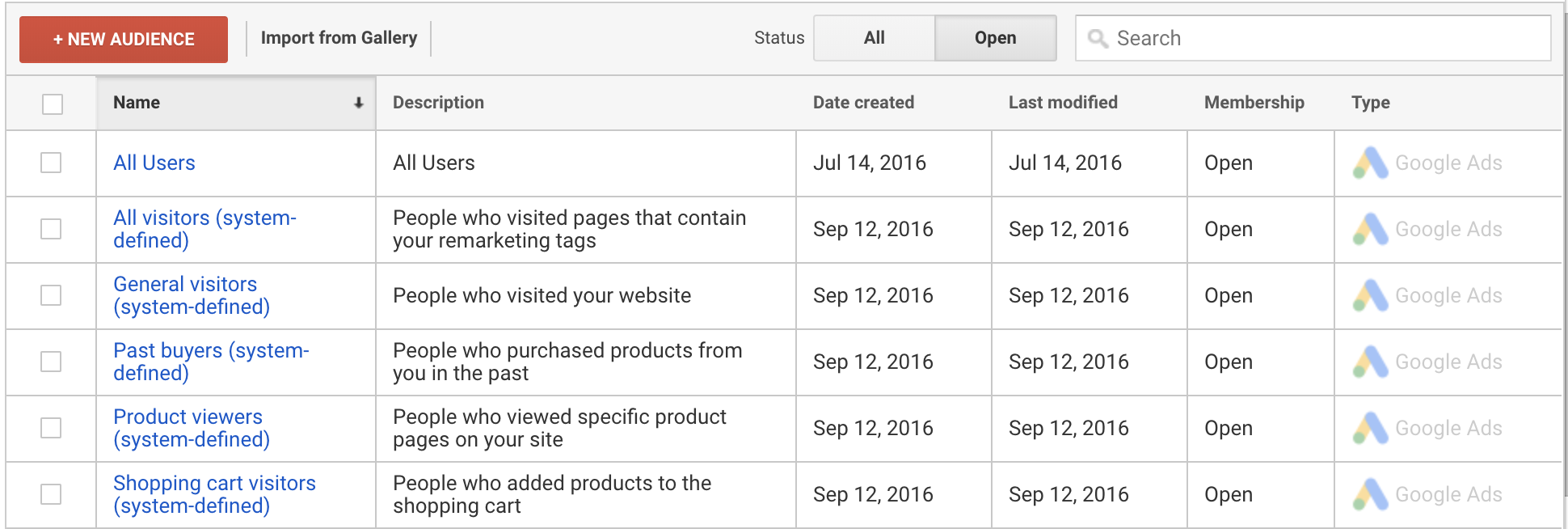Using Remarketing in Google Analytics: A Comprehensive Guide
Using remarketing in Google Analytics provides services a calculated side in reaching out to potential consumers. This overview will lose light on the necessary actions included in using the full potential of remarketing in Google Analytics, leading to boosted advertising and marketing end results.
Understanding Remarketing in Google Analytics
Remarketing in Google Analytics permits organizations to purposefully target customers who have formerly communicated with their internet site or mobile app. By leveraging data from Google Analytics, organizations can produce tailored remarketing checklists based upon customer actions, such as pages gone to, activities taken, or certain goals attained. This effective tool makes it possible for businesses to re-engage with individuals who have actually revealed interest in their items or solutions, ultimately increasing the probability of conversion.
Understanding the various kinds of remarketing strategies is essential for an effective project - What Is “Remarketing” In Google Analytics?. Google Analytics provides various alternatives, consisting of typical remarketing, dynamic remarketing, and remarketing lists for search advertisements (RLSA) Each kind offers an one-of-a-kind function and can be tailored to satisfy details advertising purposes
Moreover, analyzing the efficiency of remarketing projects is vital for enhancing results. Google Analytics offers beneficial insights right into the effectiveness of various remarketing techniques, allowing businesses to make data-driven decisions and improve their targeting technique. By continually checking and changing remarketing initiatives based on analytics data, businesses can optimize ROI and drive success in their advertising initiatives.
Establishing Remarketing Projects

After establishing audience listings, the following action is to link Google Analytics with Google Advertisements. By linking these two platforms, services can flawlessly move target market lists from Google Analytics to Google Ads for remarketing functions. This assimilation enables for more exact targeting and better project performance.
When the accounts are connected, services can create remarketing projects in Google Advertisements utilizing the audience notes formerly specified in Google Analytics. These projects can be personalized with details advertisement creatives, messaging, and bidding process methods to effectively re-engage with previous visitors and click here now drive conversions. By adhering to these actions, organizations can take advantage of the power of remarketing to boost their marketing initiatives and increase ROI.
Using Target Market Segmentation Techniques

Predefined sectors in Google Analytics allow you to rapidly analyze typical target market groups fresh individuals, returning customers, or users who completed a details objective on your website. Custom-made sectors, on the various other hand, enable you to create one-of-a-kind segments based on details criteria that are essential to your company goals. Dynamic remarketing checklists automatically readjust based upon customer actions, revealing tailored advertisements to users who have interacted with your site in particular ways.
Analyzing Remarketing Efficiency Metrics
Upon examining the effectiveness of remarketing projects in Google Analytics, the analysis of vital performance metrics provides visite site useful insights right into target market involvement and conversion rates. By delving right into metrics such as click-through rates (CTR), conversion prices, cost per procurement (CPA), and return on advertisement invest (ROAS), online marketers can determine the success of their remarketing efforts. Evaluating these metrics makes it possible for marketing experts to enhance projects, refine audience targeting, and designate spending plans efficiently to improve total remarketing efficiency.
Enhancing Remarketing Approaches
When refining remarketing techniques in Google Analytics, concentrating on target market division is vital for attaining campaign success. By dividing your audience into certain sectors based upon their actions, demographics, or interests, you can tailor your advertisements better to each group. This targeted technique enhances the probability of involving customers that have actually currently revealed passion in your services or products, causing greater conversion prices.
An additional essential aspect of enhancing remarketing techniques is continuously testing and refining your campaigns (What Is “Remarketing” In Google Analytics?). A/B testing different ad creatives, messaging, or offers can help you identify what reverberates ideal with your audience and drives one of the most conversions. By analyzing the efficiency of these examinations in Google Analytics, you can make data-driven choices to enhance your remarketing initiatives better
Moreover, leveraging vibrant remarketing can dramatically boost your project results. This function allows you to reveal tailored ads to users based on their previous communications with your web site, showcasing solutions or items they have previously seen. By delivering look what i found customized material to customers based on their habits and rate of interests, vibrant remarketing can assist increase involvement and drive conversions.
Final Thought
Finally, taking advantage of remarketing in Google Analytics is a tactical strategy to target individuals who have previously involved with a site. By creating tailored audience checklists and using target market segmentation strategies, services can optimize remarketing advocate boosted conversion rates. Assessing efficiency metrics and constantly optimizing strategies are critical for maximizing the performance of remarketing initiatives.
Google Analytics provides numerous options, including common remarketing, dynamic remarketing, and remarketing listings for search ads (RLSA)After establishing up audience lists, the next action is to connect Google Analytics with Google Advertisements. By linking these two systems, companies can effortlessly move audience listings from Google Analytics to Google Advertisements for remarketing objectives.As soon as the accounts are linked, organizations can create remarketing campaigns in Google Ads utilizing the target market details previously defined in Google Analytics.When refining remarketing methods in Google Analytics, focusing on audience segmentation is vital for attaining campaign success.